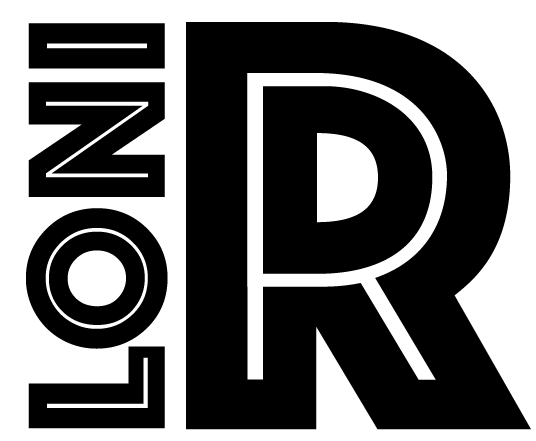Research Protocols
Skullstripping
RF Correct MRI scans
In order to generate a reasonably made label by the automatic masking program, RF correction is recommended to offset any artifacts created by the background noise or motion. Type in the following command.
nu_correct CASE_NO_2A_raw.mnc.gz nu_raw.mnc
Untilt the Brain
Sectioning the images to a finer increment of 1.00 mm width, the brain needs to be fit into an average human brain. Selecting ten tag points that corresponds with the designated ones on the brain template. Follow the instruction below to select the tag points.
register ../../norm_avg_305_mri_1mm_unfilt.mnc.gz -tag ../../norm_avg_305_mri_1mm_unfilt.tag nu_raw.mnc.gz
The first two tag points
- Use sagittal view and select the one slice before where the cerebellum is no longer visible.
- Click on the intersection between the cerebral cortex and cerebellum seen on the coronal-view slice.
The third point – The Most Anterior Portion of Corpus Callosum
- Begin with the coronal view of the frontal lobe. Select one slice before where the fiber tracts no longer merge.
- Click on the center point of the merged tract and make sure that the selected tag point is within the tract in all plans.
The fourth Point – The Most Posterior Point of Corpus Callosum
- Begin with the mid-sagittal view of the brain.
- View the coronal plan and select one slice before where the fiber tracts no longer merge.
- Click on the center point of the merged tract and make sure that the selected tag point is within the tract in all plan
The fifth and sixth Points – The Center of the Eyes
- Begin with the horizontal section of the brain.
- Select the slice where the eyes appear to be the roundest and the corneas are the brightest.
The seventh Point – The Fourth Ventricle and Cerebellum Intersection
- Go to the transverse view and click on the mid section
- Begin with the coronal view and select the point where the 4th ventricle is seen the clearest passing through the midbrain area.
- Select the point where the cerebellum concaves and meet the ventricle.
- Go the horizontal view again and make sure that the bottom of the ventricle meets the bottom of the central cursor area.
The eighth and ninth points – The Apex of Temporal Lobes
- Begins with the coronal view of the brain and select one slice before the temporal lobe is no longer visible.
- Ascertains that the central cursor point is within the structure.
The tenth point – Mammillary Body
- Go to mid-sagittal view.
- Select for mammillary body where it can be seen the clearest on the sagittal view. Usually, there is only one slice that shows this feature clearly.
- When finished, save the files in tag and xfm files. Remember to click on the yellow boxes to ensure proper storage. ie.
Case_No_reslice.xfm
Case_No_reslice.tag
- When finished, save the files in tag and xfm files. Remember to click on the yellow boxes to ensure proper storage. ie.
Once the tag points and transformation files are created, Type the following command to reslice the section to 1.00 millimeter.
mincresample -short Case_No_2A_raw.mnc.gz Case_No_reslice_raw.mnc -like /data/devel/Rebccecca/LEVITT/icbm_template_1.00mm.mnc -transformation Case_No_reslice.xfm
BSE Command Lines
Using the command lines below, the computer automatically generates labels that theoretically encompass all of the cortical matters.
- ~drex/scripts/minc_to_anal.csh nu_raw.mnc.gz nu_raw.img
- ~drex/bin/bse2.12-mips -p /data/devel/Rebecca/LEVITT/CASE_No./mincs/
-i nu_raw.img -o nu_raw_mask.img -a 4.0 5.0 -g 0.76 - ~drex/scripts/anal_to_minc.csh -like nu_raw.mnc.gz
nu_raw_mask.hdr nu_raw_mask.mnc
BSE-Generated Mask Cleanup
Sagittal View
Begin with the sagittal view, there are several usual niches in the brain that BSE tends to include in the process and needs to be revised manually. The fatty tissues surrounding the cerebellum (a) and mammillary bodies (b) and the dura maters covering the posterior portion of the brain (c) are frequently and mistakenly included as cortical matters. Hence, errors are often detected in these three areas. In addition, the meninges(d)located in the canal and the blood vessels outside the cortex (e), as a rule of the thumb, are referred to as extracortical matters here and are excluded. See figure 2 for pre- and post-cleanup illustration.
Coronal View
Coronal view is used as a reference in the events of confusion. Extracortical tissues found in areas including superior sagittal venous sinus (a), posterior portion of the cerebellum (b) and the canal are often difficult to detect in the sagittal view, so using the coronal view should compensate this deficiency. CSF found in the ventricular space (c) is best seen in this view and should be excluded until the innermost end of the canal. See figure 4 for pre- and post-cleanup illustration.
Transverse View
One of the easiest spots to overlook is at the junction of the frontal lobe and temporal lobe. There is fatty tissues fond here surrounding the apex of the temporal lobe (a). This should also be excluded.
- Once the cleanup process is completed, change the label from 255 to 1 and then go to Segmenting Menu and click on Crop off. Now, save the mask as
nu_raw_mask.mnc - Using the sagittal view, any discontinuous space should be filled in. See figure 7 and 8 for pre- and post- cleanup illustration respectively.
- Change the connectivity from 4 to 8 by selecting Segmenting option on the menu and then click on 5. Once this is finished, click on C to dilate voxels 3 by 3. The computer will prompt for command, Type 3 3. Turn off the crop and then save the label as Nu_raw_mask2.mnc
- Quit out the Display program and type the command line below:
mincblur -standarddev 1 nu_raw_mask2.mnc nu_raw_mask2 - When mincblur process is completed, type the command line below:
Display Case_No_2A_raw.mnc.gz -label nu_raw_mask2_blur.mnc - Check for any empty space in the coronal view. Then save the label, after turning the crop off, asCase_No_native_mask.mnc
Automatic Tissue Classification
This application requires a skullstripped brain.
- Type the command line below to generate such file.
mincmask Case_No_2A_raw.mnc.gz nu_raw_mask3.mnc
Case_No_raw_ss.mnc~drex/scripts/minc_to_anal.csh Case_No_raw_ss.mnc
Case_No_raw_ss~dshattuc/bin/pvc -3 -i Case_No_raw_ss.img -o
Case_No_final_native_seg.img~drex/scripts/anal_to_minc.csh -like Case_No_2A_raw.mnc.gz
Case_No_final_native_seg.hdr Case_No_final_native_seg.mnc - Once the tissue classification is completed, display the label
Display Case_No_2A_raw.mnc.gz -label
Case_No_final_native_seg.mnc - Change CSF from label 0 to label 3 and then change background from label 9 to label 0. Crop off the label and save the label as
Case_No_final_native_seg.mnc
Creating Component Files: CSF, GM, and WM
- Type the following commands:
mincmath -segment -const2 0.5 1.5 Case_No_final_native_seg.mnc Case_No_component_gray.mnc
mincmath -segment -const2 1.5 2.5 Case_No_final_native_seg.mnc Case_No_component_white.mnc
mincmath -segment -const2 2.5 3.5 Case_No_final_native_seg.mnc Case_No_component_CSF.mnc - To get brain volume, CSF needs to be subtracted from the rest of the brain.
Type the following command linemincmath -sub nu_raw_mask.mnc Case_No_CSF.mnc nu_raw_mask1.mnc - Finally, remove all header, image, and skullstripped files by entering commands
rm *hdr *img *_ss_ *



